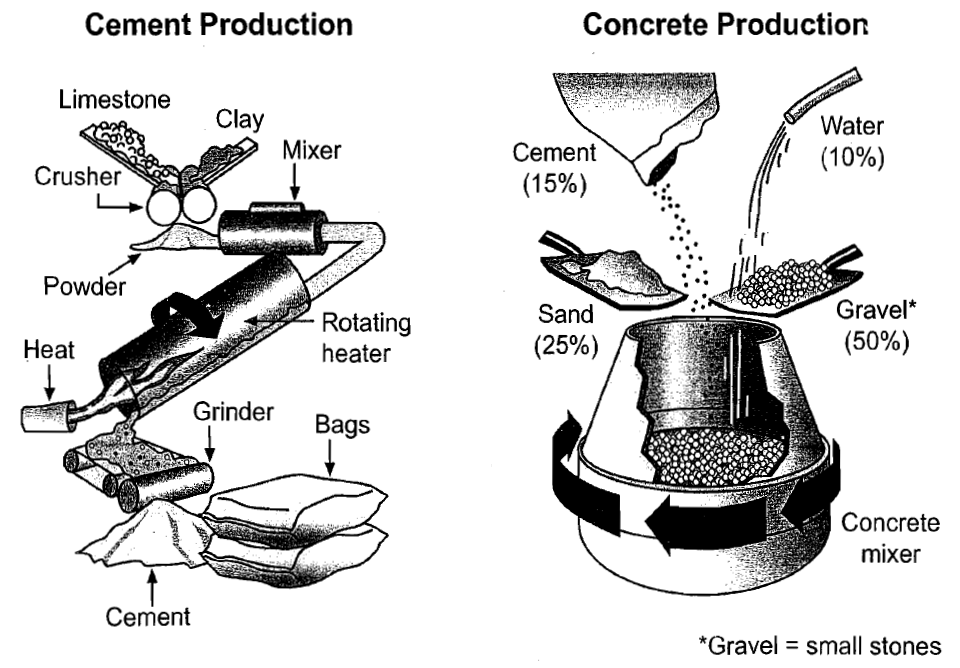ipanema13
Feb 10, 2014
Writing Feedback / Ielts writing test 1. Cement and concrete production diagrams. Ielts8 [11]
The two diagrams illustrate in an elementary form, from start to finish, how both cement and concrete are produced using varies raw materials, their percentages required, and specific machinery and mixing techniques.
The first diagram, cement production, is set in motion by adding Limestone and clay to the crusher with the result then being transferred to the mixer. After this process, the mixture is then sent through the rotating heater, resulting in a product which is then grinded to produce the desired outcome of cement. The cement is ready to be bagged.
The second diagram,although easier in it's process, uses many more materials in it's making. Gravel 50% (small stones) and sand 25% are added to the concrete mixer, with Cement and water 15% and 10% respectively, making up the balance required for the production of concrete illustrated in the diagram. This balanced mixture is then rotated in a clockwise direction.
In summarizing, while the production of cement requires only half the amount of raw materials used to make concrete. Its requires a lot more machinery and processes to produce.Furthermore, although the production of concrete is simple in its process, the percentage of raw materials to be added to said process is to be strictly adhered too.
Can someone please tell me how this is? any thoughts, points, tips?
much appreciated
Steven
The two diagrams illustrate in an elementary form, from start to finish, how both cement and concrete are produced using varies raw materials, their percentages required, and specific machinery and mixing techniques.
The first diagram, cement production, is set in motion by adding Limestone and clay to the crusher with the result then being transferred to the mixer. After this process, the mixture is then sent through the rotating heater, resulting in a product which is then grinded to produce the desired outcome of cement. The cement is ready to be bagged.
The second diagram,although easier in it's process, uses many more materials in it's making. Gravel 50% (small stones) and sand 25% are added to the concrete mixer, with Cement and water 15% and 10% respectively, making up the balance required for the production of concrete illustrated in the diagram. This balanced mixture is then rotated in a clockwise direction.
In summarizing, while the production of cement requires only half the amount of raw materials used to make concrete. Its requires a lot more machinery and processes to produce.Furthermore, although the production of concrete is simple in its process, the percentage of raw materials to be added to said process is to be strictly adhered too.
Can someone please tell me how this is? any thoughts, points, tips?
much appreciated
Steven

